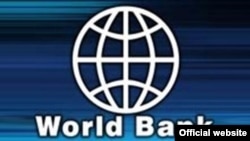In its latest report on the global economic situation, the World Bank referred to Iran’s GDP statistics to emphasize that Iran’s economic growth for 2017-2019 will be less than its previous forecast.
Iran’s GDP growth for the current year will be 4 percent, the World Bank reported on its website on June 5 -- 1.2 percent less than the previous assessment.
The country’s economic growth for 2018 and 2019 at 0.7 percent and 0.3 percent less than the last forecast will be 4.1 percent and 4.2 percent, respectively.
Furthermore, Iran’s very low capacity in boosting its oil output and the continuation of restrictions and limits it faces in attracting foreign capital are the major challenges confronting Iran on its path to economic growth.
Currently, the real figure for Iran’s daily oil production is 3.8 million barrels. According to Iranian officials, by the end of the year, 350,000 barrels per day will be added. The extra output is expected to be produced at Iran’s newly discovered oil fields.
Nevertheless, 80 percent of Iran’s oil fields are in the second half of their productive life expectancy. These old oilfields are expected to lose 300,000 barrels of their total production capacity per day.
Based on assessments by the U.S. Energy Department and Iranian Oil Ministry, the old oilfields are losing 8 percent to 12 percent of their output every year.
Therefore, Iran’s capacity for producing extra oil will be limited to only 50,000 barrels a day.
“Iran is seen slowing to a 4 percent rate before accelerating modestly to a 4.1 percent pace in 2018 as limited spare capacity in oil production and difficulty in accessing finance weigh on the country’s growth,” concluded the World Bank report.
Referring to the sanctions imposed on Iran, including new targets that have been added to the sanctions’ list by the Trump administration and new sanctions being discussed in the U.S. Congress related to Tehran’s missile program, the report asserted: “New sanctions will possibly eliminate foreign investors’ confidence in stepping into the Iranian market and investing there.”
“Once again in last March, foodstuff prices in Iran increased in double-digit figure, yet, comparing to the 35 percent increase in 2013, it is a very low figure,” the report said.
Meanwhile the report stressed the fact that there will be no change in the World Bank’s forecast for global economic growth from last January. Therefore, world economic growth in the current year remains at 2.7 percent and nearly 2.9 percent for 2018-2019.
On regional economic growth, the report reiterated: “Growth in the region is projected to fall to 2.1 percent in 2017 as the adverse impact of OPEC production cuts on oil exporters outweighs modestly improving conditions in oil importers.”
Assuming a moderation of geopolitical tensions and an increase in oil prices, the World Bank report confirms that growth is slated to increase to 2.9 percent in the Middle East in 2018.
“Growth in Saudi Arabia, the largest economy in the region, is anticipated to ease to 0.6 percent as a result of the production cuts, before accelerating to a 2 percent pace in 2018,” the report continued.





